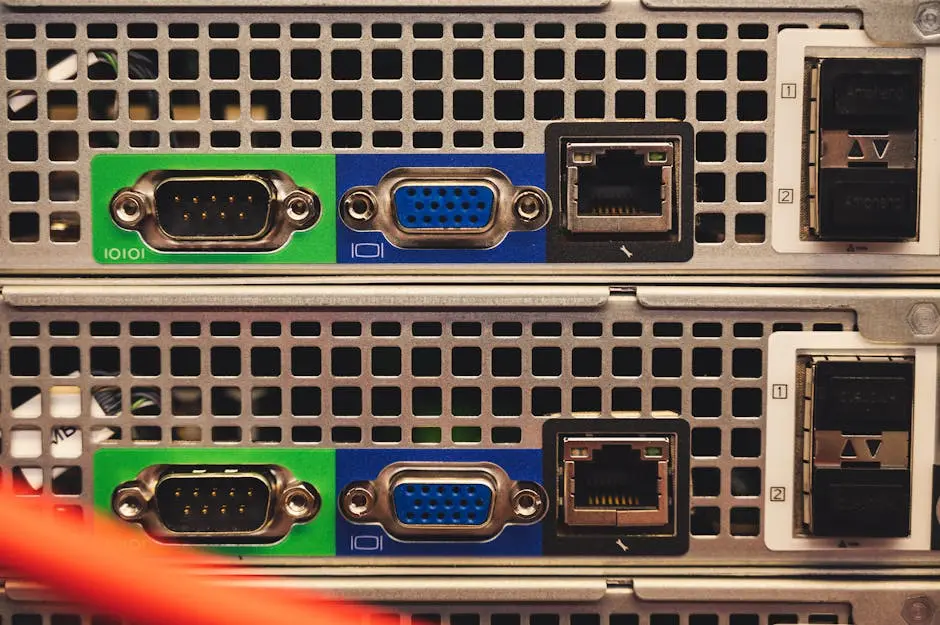7 Tips for Choosing the Right Cables Connectors for Your Surveillance System
Choosing the right cables connectors for your surveillance system is crucial for ensuring the smooth operation and reliability of your security setup. With so many options available, it can be overwhelming to know which connectors will best serve your needs. But worry not! These tips will guide you in making an informed decision.
1. Understand Your System Requirements
Before choosing cables connectors, it’s important to fully grasp the specific needs of your surveillance system. Consider the types of cameras used, the distance over which signals must be transmitted, and whether your system operates over IP or analog. The type of cable can have a significant impact on the performance of your system. For instance, if you opt for a coaxial cable, you’ll benefit from its great insulation properties, which reduce transmission disruption.
It’s also essential to think about the environment where your system will be operating. Will your cables need to withstand harsh weather conditions or exposure to sunlight? This is where knowledge of various CCTV camera cables becomes indispensable. You’ll find options like Siamese cables, which though trickier to manage, serve both data and power transfer needs simultaneously. Such insights help supervise the complete setup efficiently.
2. Prioritize Cable Connector Compatibility
Compatibility is key. Make sure the connectors you choose are compatible with your existing cables and devices to avoid any signal loss or connection issues. For example, if your system uses coaxial cables, you might not get the desired output if you connect them with fiber optic components. Checking compatibility details can save substantial time and resources.
While compatibility is a factor, it also affects decisions regarding future expansions or upgrades. You must select connectors that seamlessly integrate with your existing infrastructure. Products that offer plug and play compatibility are a hassle-free choice for quick deployments, ensuring the system-wide compatibility necessary for a smooth operation.
3. Consider Quality and Durability
Investing in high-quality cables connectors can save you time and money in the long run. Look for connectors made from durable materials that can withstand environmental factors and daily wear and tear. Proper material selection, such as copper or aluminum, not only improves performance but enhances durability, crucial for maintaining consistent quality.
Aside from material, the design of the connectors plays a crucial role in their longevity. Opt for products that feature weather-proofing elements, preventing wear and tear in extreme conditions. Reliable connectors ensure uninterrupted surveillance even in challenging settings. Choose wisely to ensure you don’t end up facing frequent replacements or performance hitches.
4. Evaluate Signal Transmission Needs
Consider the distance over which signals need to be transmitted. Some connectors perform better over long distances, maintaining signal quality and reducing potential interference. Choosing the right medium is essential; for prolonged reaches, optic fiber cables are viable options due to superior signal strength and quality.
To evaluate your needs accurately, factor in the potential for interference from electronic equipment, walls, and other obstructions. Products engineered to minimize interference, like RG-6 cables, can be advantageous in tech-heavy or dense building environments. This choice can ensure that surveillance is uncompromised and video quality remains optimal.
5. Check for Easy Installation and Maintenance
Ease of installation and maintenance is crucial. Opt for connectors that can be easily installed without professional assistance and require minimal upkeep. Products that can swiftly connect and disconnect, or feature intuitive design elements, save time and reduce operational hazards.
When the question arises about frequent system checks or repairs, focus on systems that offer simplicity in maintenance. The last thing you want is complicated processes hindering your day-to-day security operations. Conveniently designed connectors will minimize the time and expertise required for routine check-ups.
6. Plan for Future Upgrades
It’s wise to think ahead. Choose connectors that allow for easy future upgrades so you can expand or enhance your system without a complete overhaul. Opt for modular systems that allow for individual component replacement, saving costs in the long run.
Accounting for scalability ensures your investment remains viable over time. Ensure your connectors support newer technologies and standards, preventing obsolescence. This foresight not only influences initial choices but sets a precedent for foundational strength within your surveillance systems.
7. Consider Cost without Compromise
While budget is important, it’s crucial not to compromise on quality. Find a balance between cost and functionality to ensure you’re getting the best value for your investment. Skimping on components can lead to unsatisfactory performance and increased costs due to frequent replacements or repairs.
To strike a balance, compare product specifications and warranties. Leverage online resources to assess if particular brands offer value through long-lasting, resilient solutions suitable for your setup. Always weigh cost-effectiveness against potential quality benchmarks to make informed decisions.

























































